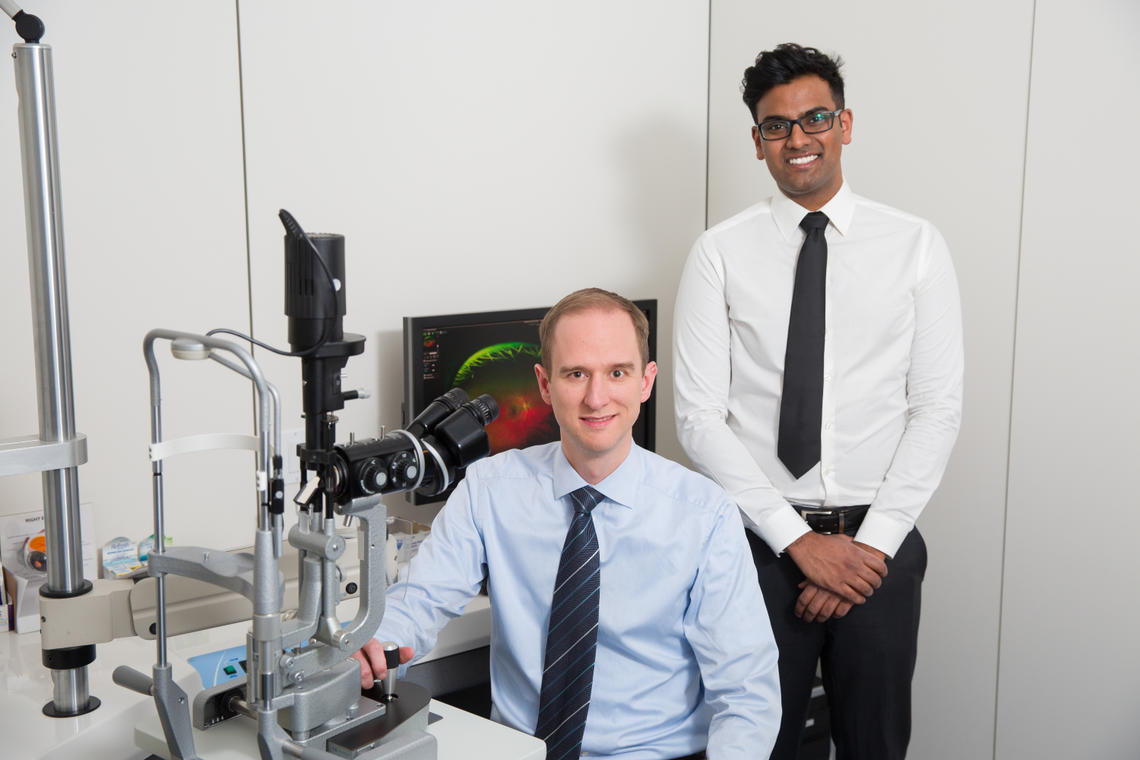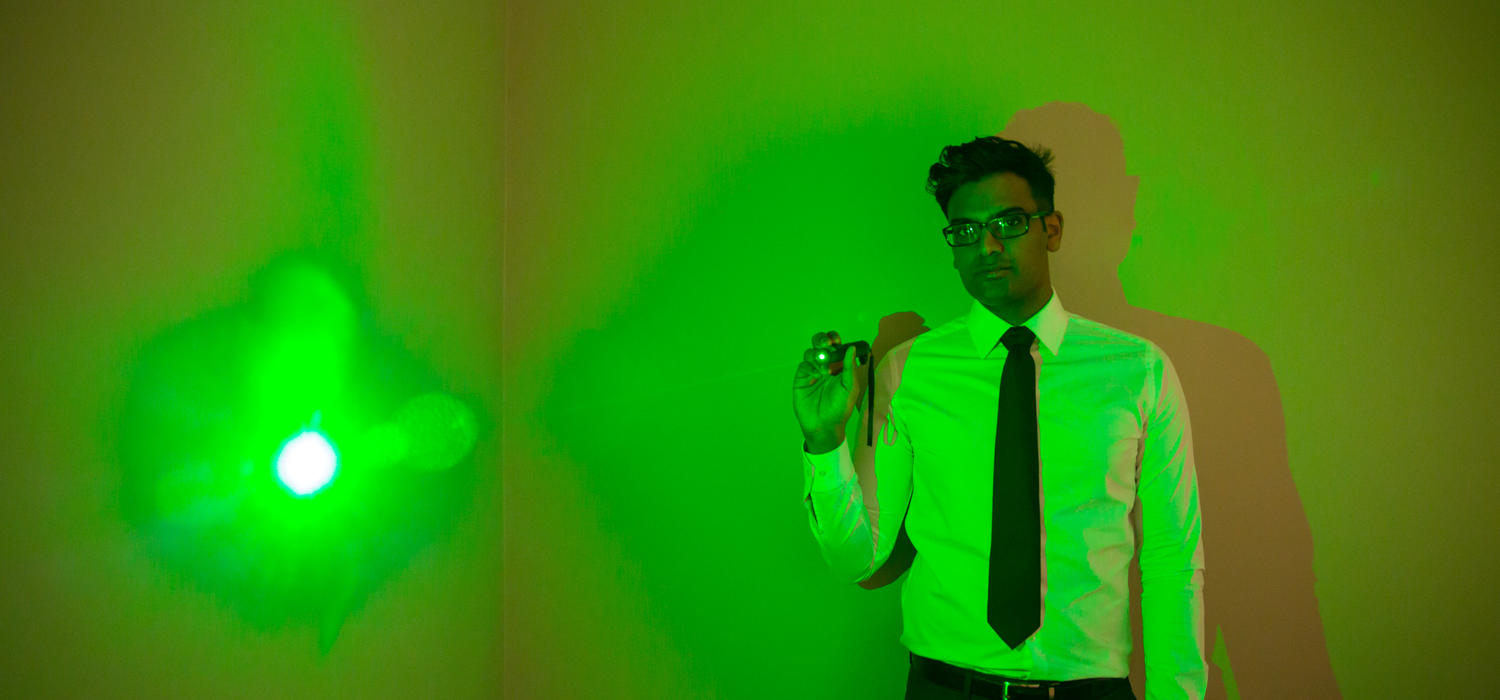
Dr. Michael Fielden, ophthalmologist and assistant clinical professor, and Mathew Palakkamanil.
Riley Brandt, University of Calgary
Jan. 15, 2016

Researchers at the Cumming School of Medicine recently completed a study into the effects of laser pointer strikes on the eyesight of commercial aircraft pilots.
According to Transport Canada, laser strikes are a growing aviation and public safety issue with 502 incidents reported in 2014 — a 43-per-cent increase from 2012.
The study looked at pilots from one major airline who were struck in the eye by a laser while flying between April 2012 and November 2014. Within three days of the laser incidents, the pilots underwent a mandatory eye exam by a Calgary ophthalmologist for clearance before returning to work.
Human eye is more vulnerable to injury from laser radiation than skin
Nearly all the pilots were temporarily blinded by the bright laser light and reported immediate symptoms of eye irritation and burning, both of which can potentially affect their ability to fly a plane.
“We did not find any permanent ocular damage from the laser strikes,” says Dr. Michael Fielden, a Calgary ophthalmologist and assistant clinical professor at the Cumming School of Medicine, who co-wrote the paper.
“Given the importance of clear vision in a pilot’s duties, eye injury could potentially be career-ending,” says Fielden. “The human eye is more vulnerable to injury from laser radiation than skin. We undertook this study to ensure that pilots were not receiving vision-threatening injuries.

Dr. Michael Fielden, ophthalmologist and assistant clinical professor, and Mathew Palakkamanil.
Riley Brandt, University of Calgary
Laser strikes can jeopardize aviation safety; preventive measure needed
Mathew Palakkamanil, a medical student and co-author of the paper, has a personal connection to the research — he is also a student pilot.
“This is a very new topic; 10 years ago, it wasn’t an issue,” says Palakkamanil. “Given the widespread accessibility of high-power lasers and the rapid increase in incidents, laser strikes threaten to jeopardize aviation safety in the coming years if effective preventive measures are not put in place.”
Several different types and strengths of laser pointers are available to consumers in the marketplace, but the devices are not always used safely, as intended. The most powerful type, green light lasers, were used in 92 per cent of the incidents in the study. The length of laser exposure ranged from less than one second to 20 seconds.
Study aims to be foundation for stricter laws and regulation on laser sales
In Canada, pointing a laser at an aircraft is illegal. Perpetrators can be charged under the Aeronautics Act and face a fine of up to $100,000 or prison time if found guilty.
This study is believed to be the first of its kind in Canada to document the ocular effects of malicious laser exposure in commercial pilots. The authors hope the study will provide the basis for stricter laws and further regulations on laser sales.
It was published in the December 2015 edition of the Canadian Journal of Ophthalmology.